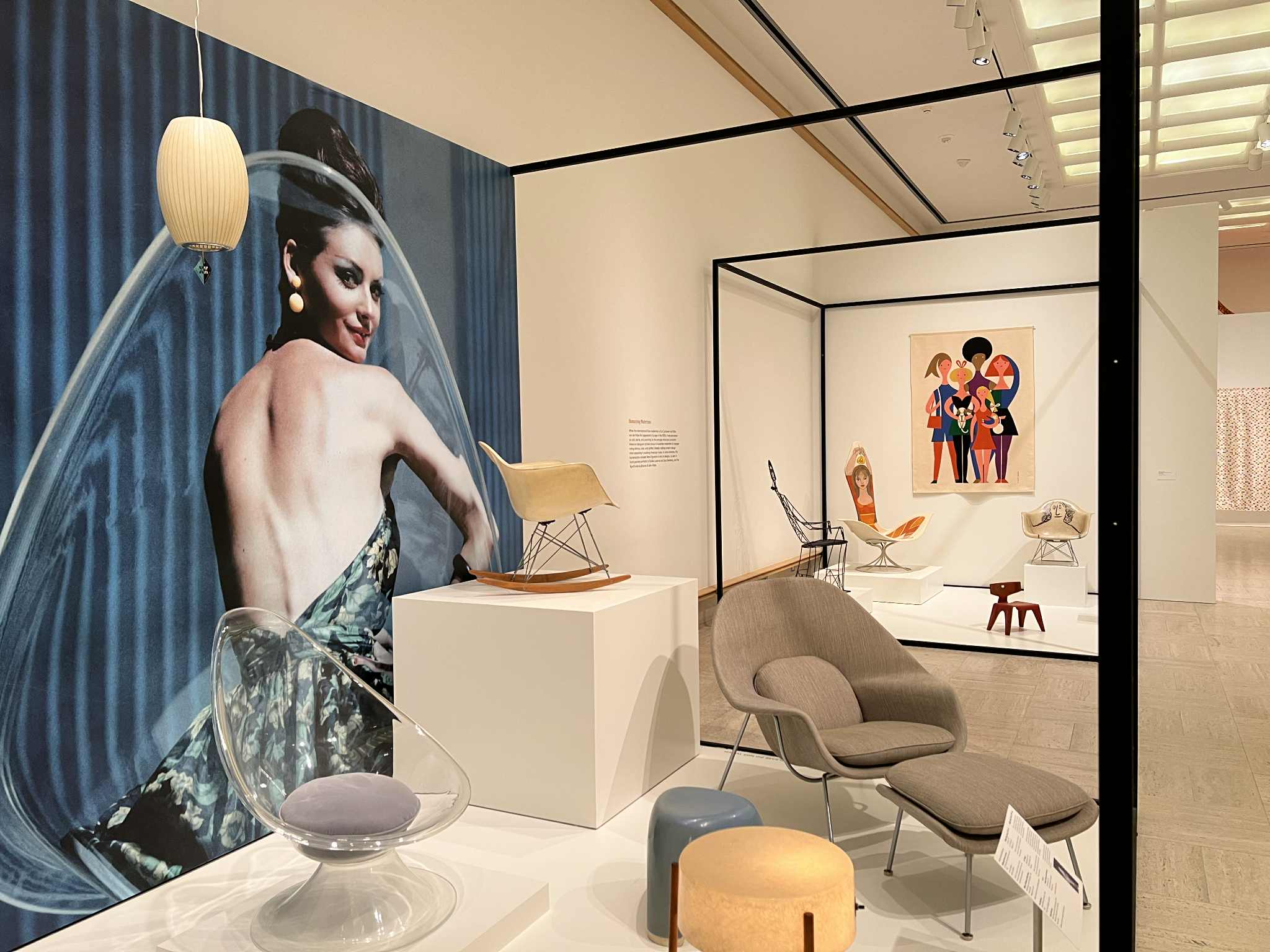“Eventually Everything Connects: Mid-Century Modern Design in the US”
Cranbrook Art Museum
Bloomfield Hills, Mich.
Through Sept. 21
I’ve never considered myself much of a fan of mid-century modern design. It’s always been a bit quirky for my taste and lacks both the beautiful ornateness of its predecessors as well as a cozy, inviting feeling of less formal design. But after visiting the Cranbrook Art Museum’s latest exhibit, I find myself having a greater appreciation for the style.
The exhibit, “Eventually Everything Connects: Mid-Century Modern Design in the US,” features a series of displays that highlight different elements of mid-century modern design and its history, including its influence on furniture, fabric and office space, paving the way for how we live and do business today. It highlights leaders of the mid-century modern movement, who include alumni of the museum’s prestigious affiliate graduate school, the Cranbrook Academy of Art, like Charles and Rae Eames, Florence Knoll, Harry Bertoia, Eero Saarinen and others, as well as often-overlooked designers of color and women.
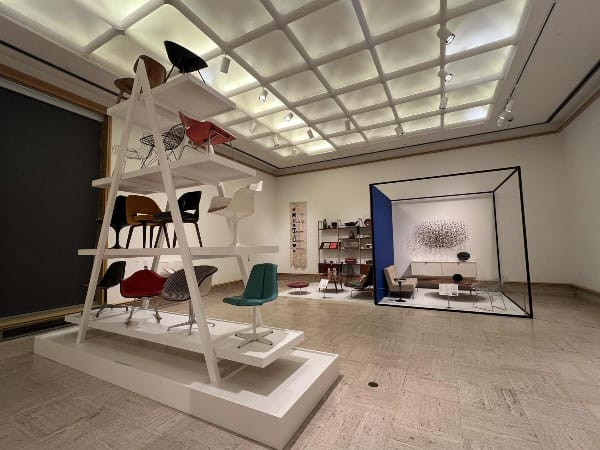
The exhibit opens with an overview and an origin story. It notes how mid-century modernism was a response to the functional, industrial style of Europe’s modern movement from the early 20th century, which was subsequently interrupted by World War II. When the war ended, mid-century modernism developed, flourishing in the 1950s and 1960s in a prosperous post-war United States with a style known for its ergodynamics, biomorphism and colorful patterns. It was a humanization of cold, less inviting modernism design that added warmth and whimsy.
The humanization example in the exhibit – with literal humans incorporated into the chair design – was one of my favorites. It included the steel People Chair by John Risley and the Tulip Chair with Painted Portrait by Estelle and Erwine Laverne.
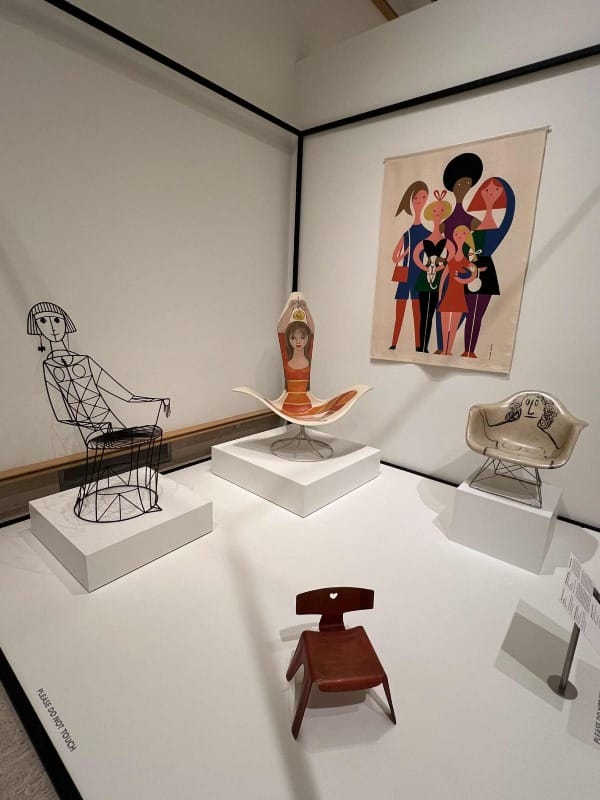
One of the aspects I found most interesting about the movement was its role in creating comfortable furniture, an idea that seems silly today. The United States’ post-war economic prosperity led to a growth in leisure time. With the mass introduction of phonographs and TV sets, American homes needed furniture appropriate for relaxing, and lounge seating was born.
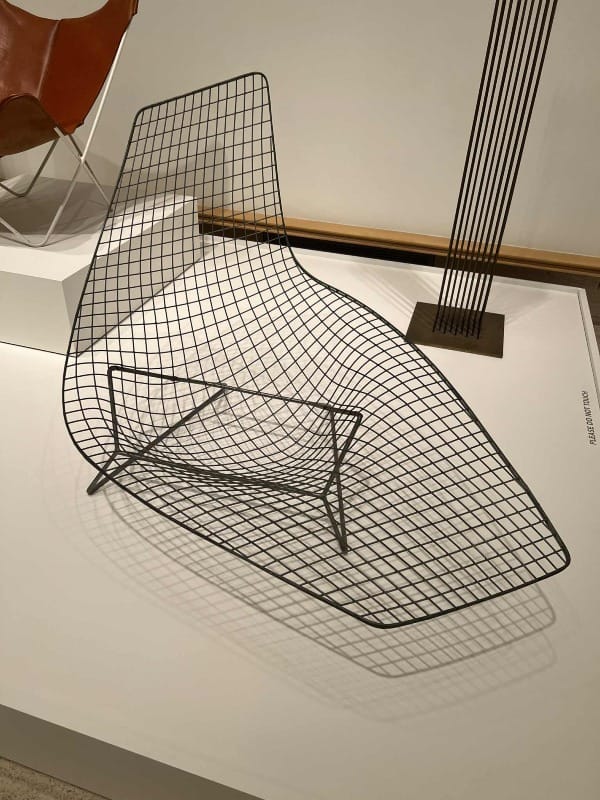
Similarly, the increase in leisure time led to the development of outdoor seating for porches and patios and introduced rattan and bamboo furniture, which was cheaper than wood and easy to maintain.
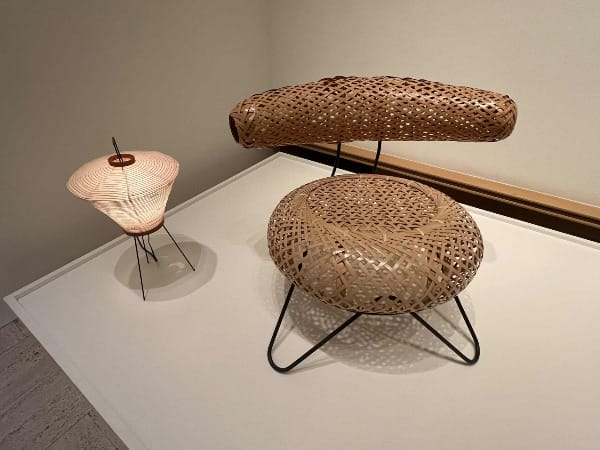
The adoption of plastic – such a ubiquitous material in modern day – also had a significant impact on mid-century modernism designs, since the material was cheaper than wood and steel, plus lightweight and easier to mold.
Mid-century modernism’s impact on modern office design was another aspect of the exhibit that stuck out to me. As the number of white-collar workers and corporations rose post World War II, designers like Knoll envisioned the open plan workspace with executive suites, eventually designing the modern cubicle to create an efficient working environment.
Perhaps most surprising to me was the exhibit’s Pop Design and the Atomic Age display, which featured quirky, colorful furniture and clocks. The clocks especially highlighted Atomic Age design which captured people’s post-war anxieties and fascination with nuclear technology. The designs, inspired by atoms and starbursts, actually felt a bit dark to me.
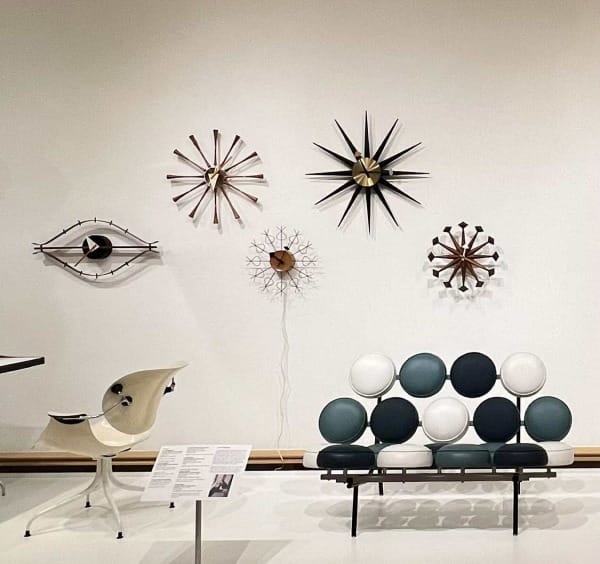
Before the Cranbrook exhibit, I’d never thought much about mid-century modernism and would never have considered its colorful, futuristic designs as having been impacted by World War II. I still don’t see these designs making much of an appearance in my house, but I will never look at mid-century modernism the same way.
